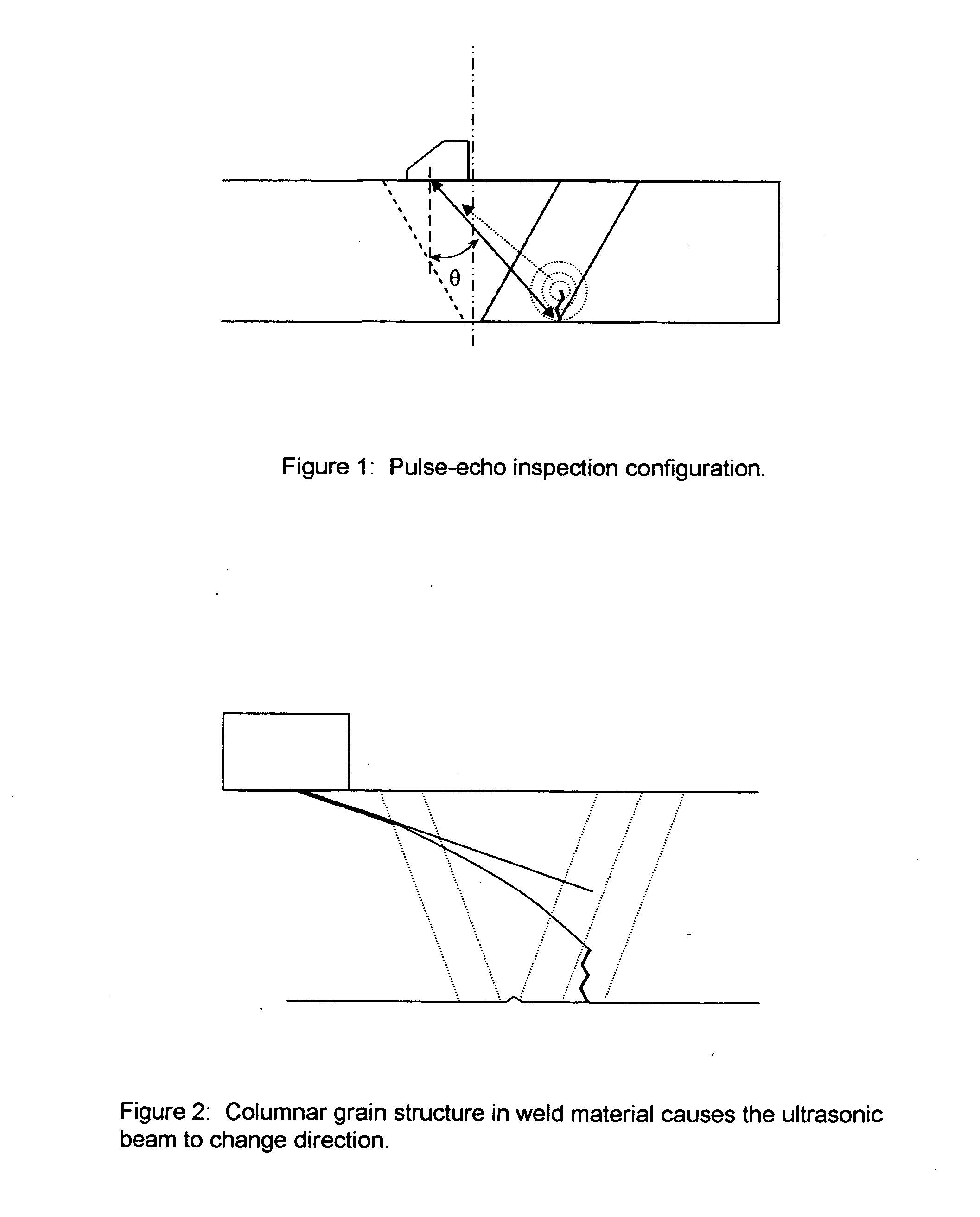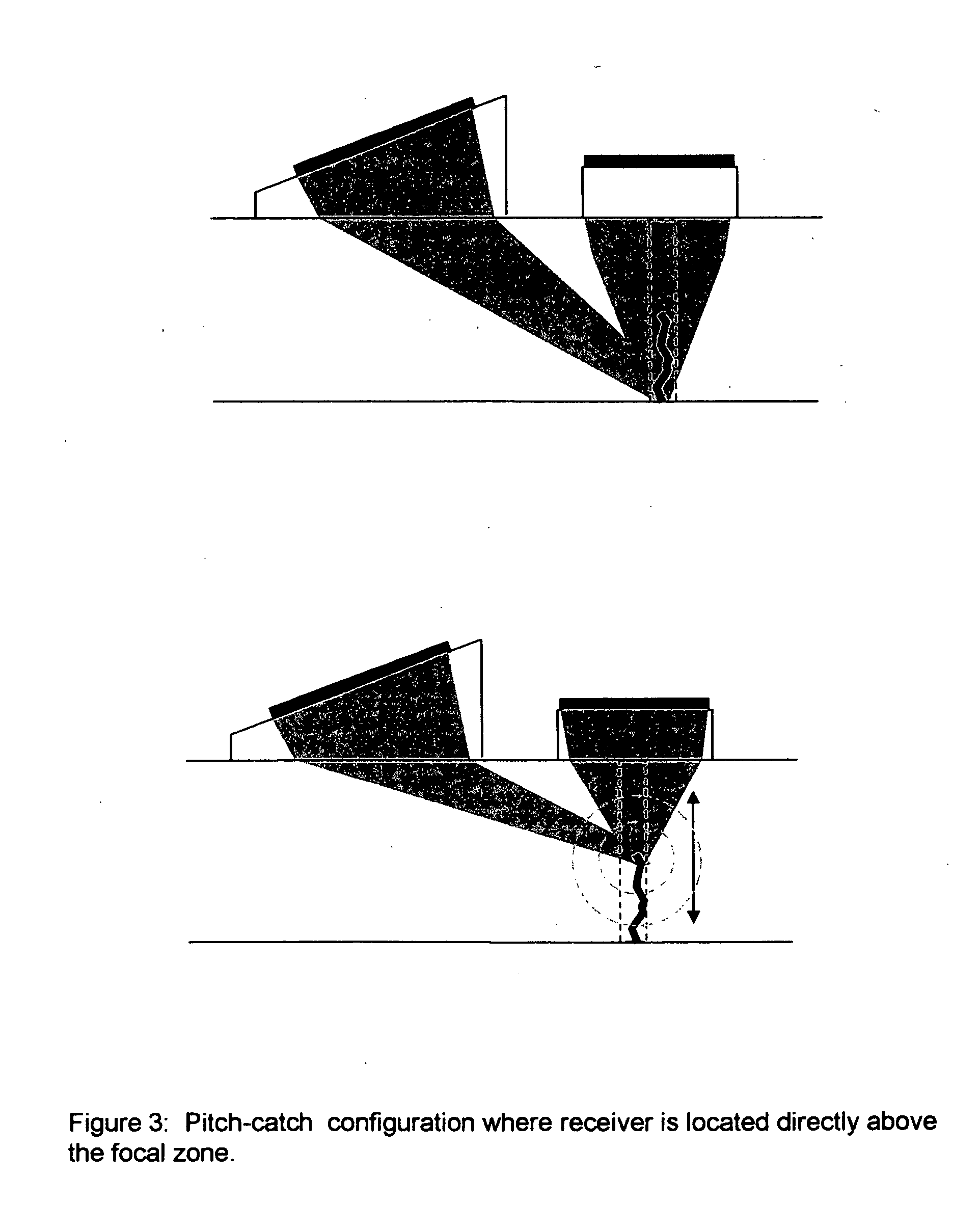Ultrasonic method for the accurate measurement of crack height in dissimilar metal welds using phased array
a technology of phase array and ultrasonic inspection, which is applied in the direction of heat measurement, specific gravity measurement, instruments, etc., can solve the problems of not meeting the flaw through-wall sizing requirements of manual ultrasonic examination methods, dissimilar metal welds are long identified as difficult components to inspect, and the welds are highly susceptible to crack initiation, etc., to achieve the effect of facilitating contouring and facilitating transmission and reception of sound energy
- Summary
- Abstract
- Description
- Claims
- Application Information
AI Technical Summary
Benefits of technology
Problems solved by technology
Method used
Image
Examples
Embodiment Construction
[0030] The present invention is an ultrasonic inspection technique used for the measurement of crack tip depth in large grain materials where crystallographic structure results in beam redirection or bending.
[0031]FIG. 5 is an illustration of the transducer assembly mounted on the OD surface 1 of a circumferntial pipe weld. The transducer assembly consists of two separate ultrasonic transducers 2&3. One transducer acts as a ultrasonic transmitter 3, and the second transducer 2, as the receiver.
[0032] Each transducer housing 2&3, consists of an array of piezoelectric crystals 4, mounted to a wedge 5, where a sound coupling medium is applied between the two components. The array 4, consists of numerous individual piezoelectric crystals (typically between 8-16 crystals). Each crystal is electrically connected to either a transmitter or receiver channel on the ultrasonic phased array system using a shielded cable 6.
[0033] The ultrasonic energy is produced by applying a voltage across...
PUM
 Login to View More
Login to View More Abstract
Description
Claims
Application Information
 Login to View More
Login to View More - R&D
- Intellectual Property
- Life Sciences
- Materials
- Tech Scout
- Unparalleled Data Quality
- Higher Quality Content
- 60% Fewer Hallucinations
Browse by: Latest US Patents, China's latest patents, Technical Efficacy Thesaurus, Application Domain, Technology Topic, Popular Technical Reports.
© 2025 PatSnap. All rights reserved.Legal|Privacy policy|Modern Slavery Act Transparency Statement|Sitemap|About US| Contact US: help@patsnap.com



